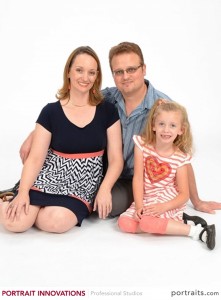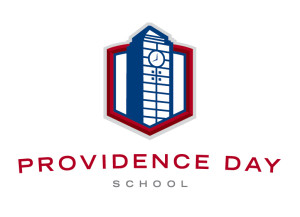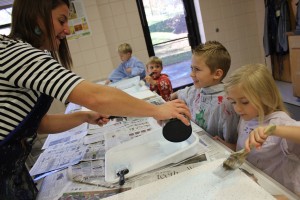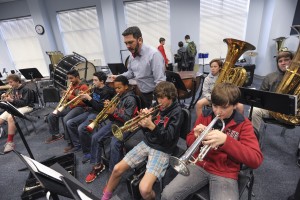By Smarty Guest Blogger, Jamie Hutteman, Providence Day School
Ah, March! The month that brings us St. Patrick’s Day, Easter, and the first signs of spring. It is the time of spring cleaning, spring fever, “springing forward,”, and finally… just in the knick of time, Spring Break. At last, students and parents everywhere can catch up on some much needed sleep.
For me and my family, March brings another reason to celebrate because it is Youth Art Month! What better way to spend your spring break than by finding ways to honor, celebrate, recognize, or experience art with your children?
As parents and teachers, our primary goals are most often directed at keeping children healthy and safe, teaching cognitive and literacy skills, and encouraging good social behavior. If your child is of school age, their day is much like our own. They stick to a structured schedule, complete assignments with deadlines, and produce projects and presentations that are graded by their teachers.
With all the time that needs to be devoted to these areas, there is less opportunity to think about the importance of nurturing a child’s creative abilities. Yet, it is children’s creativity that increases their desire to learn and supports their intellectual development.
So, what is missing?
Play time! Our kids are tired at the end of the day, as are we. When they finish dinner and homework, they need some well-earned down time, which often includes a little more screen time than we’d like. There is nothing wrong with taking a mental break from the world and enjoying your favorite video game, but it is equally important to encourage time to play, explore, create, and experiment.
This will lead to your child’s discovery of new materials, new tools, new techniques, new methods… and allow them the time and freedom to become more comfortable and confident with themselves and their creative abilities. I have been teaching theater and directing school plays for 16 years and I have always loved that my job requires me to “play!”
What is Creative play?
Creative play is any self-expressive activity that draws on the child’s powers of imagination and allows them to experiment with various forms of art. It should be open-ended, free-form and can be inspired by any art medium.
To be truly creative, children need freedom to commit themselves completely to the effort and make whatever activity they are doing their own. What’s important in any creative act is the process of self-expression.
Creative experiences can help children express and cope with their feelings, and help parents learn more about what the child may be thinking or feeling. Creativity also fosters mental growth in children by providing opportunities for trying out new ideas and new ways of thinking and problem-solving.
As parents, what can we provide for our children to help promote creative development?
One of the most important things we can provide, as parents and teachers, is a safe environment for our kids to express freely.
I begin each of my classes with games and exercises that I hope will help the students feel more comfortable with me and their classmates, while also building collaboration and performance skills such as facial expression, vocal expression, and movement. Ideally, by the time we begin presenting scenes in class, the students are not only comfortable with each other, but supportive and encouraging of one another as well. A student is much more likely to experiment and stretch themselves in this atmosphere.
You can foster that same safety and freedom by providing your child:
– time to engage in creative play and practice art
– a variety of materials to experiment with
– the freedom to work independently
– positive feedback focused more on their effort than their final product
When your child wants to turn to a screen, help guide them to activities that will allow them to engage in creative play and practice art in fun, easy ways. I have listed a few of my favorites below, along with suggestions from my colleagues within the Visual and Performing Arts departments at Providence Day. Most of them involve materials you can find around your home!
Examples of Creative Play and Art Activities
– Go to a museum and imagine together what is happening in the paintings or what the artist was thinking about
– Go to a ballet or other dance performance. Try to interpret the story being told.
– Read stories aloud and DO THE VOICES!
– Make puppets! Old gloves, socks, and paper bags make great puppet bodies, with materials found around the home for hair, eyes, etc. When you are done, have a puppet show — even if it’s just for a bed full of stuffed animals!
– Make a story circle: This is a fun exercise to do with groups to help teach plot and story development, but is easy to do with as few as two people. My family sometimes plays this at the dinner table. Have one person begin a story, telling only the first sentence. Then go around the circle having each person add to the story with only one sentence.
– Communicate in different ways for part of the day. Try 30 minutes when everyone in the house has to talk like pirates!
Andrea Downs, Middle School Art:
– Doodle…and don’t think too much about what you are doing
– Use your non-dominant hand to create a piece of artwork – either drawing or painting
– Use non-traditional tools to create a piece of artwork. For example, rather than using paintbrushes for a painting, use a toothbrush, or a palette knife, or a stick, or a cotton ball (or anything else you have around your house)
– Create a sculpture using only materials in your recycle bin
– Draw something from memory
Michael Hough, Director of Bands:
– Movement with music at an early age is great! Have students create a physical representation of what they hear (emotions, dynamics, textures). For example, play soft music and have them create movement they believe fits with the music, then play loud music and have them show that as well.
– Encourage improvisation. Have students sing, clap, stomp, play, etc. along with music. They don’t have to mimic the music (although that is a fine place to start), but rather create something complementary to the music. Sing harmonies, create a separate musical line, or clap a rhythm that goes with the music but does not match the recording exactly.
– There are some great apps out there like MadPad, Mibblio, Keezy or even GarageBand where students can record their own sounds and create unique compositions.
Sarah Russell, Lower, Middle, Upper School Strings:
– Give them non-traditional “instruments” and let them experiment with sound. I have turned that into a composition project for students as old as high-school age and they love it every time. Kitchen utensils are my favorites for this.
– Making up songs – either using words they know and making up the tune, or making up words to a familiar tune. I do this with my own children all the time!
Gabe Devereaux, Lower School Art:
– Doodle with your eyes closed/blindfolded
– Cover paper with graphite and using an eraser to draw/doodle
– Using cardboard boxes and masking tape, build a robot
– Using modeling clay, sculpt an emotion
– Take different colors of slightly watered-down paint in squeeze bottles and drip the paint on the canvas allowing the colors to mix and melt together
Jordan Ellis, Technical Director:
– Read an age appropriate book aloud (no pictures), and then using color pencils, paints, etc have your child draw/create what their mind sees while reading. This is a great exercise for developing young designers.
Caroline Bower, Upper School Theater:
– Make large cards with very simple faces on them depicting different emotions (anger, happiness, sadness, nervousness, etc.). Choose short clips of music that set the mood for each emotion. Hold the card up, have them call out the emotion, then put the music on and have them “free dance” to express that emotion. This allows experimentation with their own physicality and musicality, while creating character as well.
Benefits of Promoting Creative Play
Some skills your child can build through creative play include:
– Experimenting with and understanding social roles
– Acquiring social skills
– Practicing empathy
– Appreciation of different values and perspectives
– The ability to express and cope with their feelings
– Relief from stress, pressure, and anxiety
– Development of perspective and style
– Development of coping mechanisms
– Promotion of confidence
– Opportunities to experience control and independence, which is especially beneficial to children with disabilities
Do yourself and your kids a favor this month: celebrate Youth Art Month by finding ways to incorporate art into your day. Your kids will love it, and so will you!
Sources Referenced: “The Whole Child – For Early Care Providers – Creativity and Play.” pbs.org. n.d. Web. 22 February 2016.
 Jamie holds a Master of Fine Arts from the University of Florida in Acting and has been sharing her love of theater with students for 17 years as an educator and director. In her free time, Jamie enjoys directing and performing within the Charlotte community, spending time with her family, traveling, and making crafts.
Jamie holds a Master of Fine Arts from the University of Florida in Acting and has been sharing her love of theater with students for 17 years as an educator and director. In her free time, Jamie enjoys directing and performing within the Charlotte community, spending time with her family, traveling, and making crafts.
![]()
Providence Day School
5800 Sardis Road
Charlotte, NC 28270
(704) 887-6000
website
facebook
twitter: @ProvidenceDay








